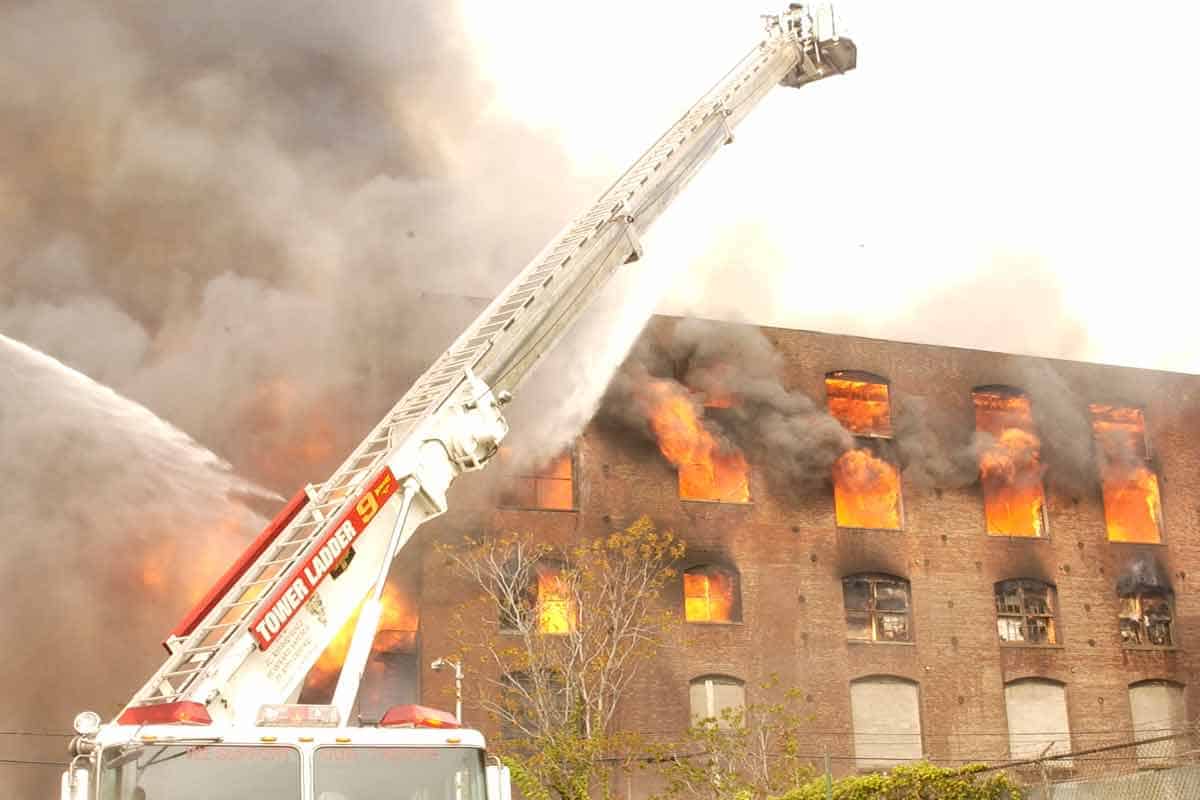On April 30, 2014, the FDNY’s esteemed supporters were honored at the 2014 FDNY Foundation Dinner. Scott Baxter, Vice President of VF Corporation, was presented with the Fire Commissioner Humanitarian Award this year. Mr. Baxter, along with VF Corporation, has a long-standing history with the FDNY and was honored for his and his company’s commitment […]
The winter of 2014 will not be forgotten soon. The residents of New York endured cold weather and near-record snowfalls. On January 9, 2014, at 1528 hours, Bronx units were tested in the bustling Arthur Avenue neighborhood by a fast-moving fire and the cold weather. Fire Department units were dispatched to Bronx Box 3328, reporting […]
At vacant building fires, it is often possible to conduct an interior attack for the expeditious extinguishment of the fire and release of units. Prior to implementing interior operations, the Incident Commander (IC) must perform a risk assessment, keeping in mind that the life hazard and safety of members involved in operations are of paramount […]
FDNY members and Firefighters from all around the country constantly repeat similar tasks during a regular work tour. Firefighters tend to run into the same problems during training and when they find something that works, they stick with it. There are certain items a ladder company Firefighter has kept on hand for years because they […]
It is very rare that predictions made from engineering research are so clearly demonstrated in the real world. But that is exactly what happened on February 19, 2014, when the bowstring roof structure collapsed at a CVS drugstore at 694 Burke Avenue in the Bronx. A portion of the structure had been examined as part […]
Editor’s Note: This two-part article will focus on mill construction features and fire protection in the first part. Construction features Mill, also called “heavy timber” and “slow burning” constructed buildings, generally are built as isolated structures to reduce the hazard of fire spreading from one building to another and creating a conflagration. They range from […]
On July 22, 2013, Manhattan Box 1584 was received via a verbal alarm at the quarters of Engine 80/Ladder 23. The fire building is on 139th Street, across the street and several buildings down from the firehouse. Engine 80 promptly transmitted a 10-75 for a fire on the top floor of a six-story multiple dwelling. […]
A fire in a building’s cockloft is a game-changing development and, provided the necessary actions are not executed within a few crucial minutes, could mean the eventual loss of an entire building. What may seem like a routine and easily controllable, one-room fire on the top floor of an H-type apartment building when Firefighters pull […]
On April 30, 2014, the FDNY’s esteemed supporters were honored at the 2014 FDNY Foundation Dinner. Scott Baxter, Vice President of VF Corporation, was presented with the Fire Commissioner Humanitarian Award this year. Mr. Baxter, along with VF Corporation, has a long-standing history with the FDNY and was honored for his and his company’s commitment […]
The winter of 2014 will not be forgotten soon. The residents of New York endured cold weather and near-record snowfalls. On January 9, 2014, at 1528 hours, Bronx units were tested in the bustling Arthur Avenue neighborhood by a fast-moving fire and the cold weather. Fire Department units were dispatched to Bronx Box 3328, reporting […]
At vacant building fires, it is often possible to conduct an interior attack for the expeditious extinguishment of the fire and release of units. Prior to implementing interior operations, the Incident Commander (IC) must perform a risk assessment, keeping in mind that the life hazard and safety of members involved in operations are of paramount […]
FDNY members and Firefighters from all around the country constantly repeat similar tasks during a regular work tour. Firefighters tend to run into the same problems during training and when they find something that works, they stick with it. There are certain items a ladder company Firefighter has kept on hand for years because they […]
It is very rare that predictions made from engineering research are so clearly demonstrated in the real world. But that is exactly what happened on February 19, 2014, when the bowstring roof structure collapsed at a CVS drugstore at 694 Burke Avenue in the Bronx. A portion of the structure had been examined as part […]
Editor’s Note: This two-part article will focus on mill construction features and fire protection in the first part. Construction features Mill, also called “heavy timber” and “slow burning” constructed buildings, generally are built as isolated structures to reduce the hazard of fire spreading from one building to another and creating a conflagration. They range from […]
On July 22, 2013, Manhattan Box 1584 was received via a verbal alarm at the quarters of Engine 80/Ladder 23. The fire building is on 139th Street, across the street and several buildings down from the firehouse. Engine 80 promptly transmitted a 10-75 for a fire on the top floor of a six-story multiple dwelling. […]
A fire in a building’s cockloft is a game-changing development and, provided the necessary actions are not executed within a few crucial minutes, could mean the eventual loss of an entire building. What may seem like a routine and easily controllable, one-room fire on the top floor of an H-type apartment building when Firefighters pull […]






